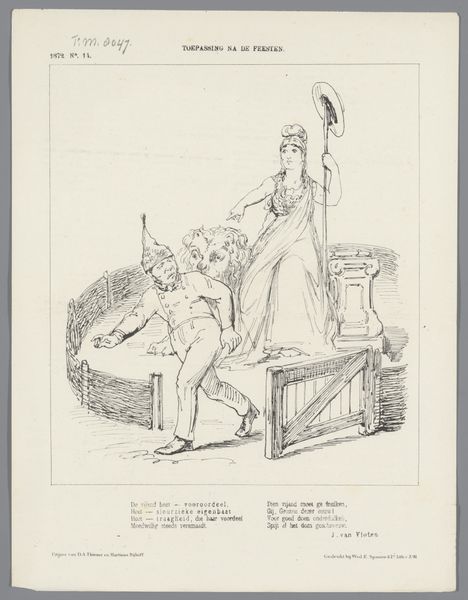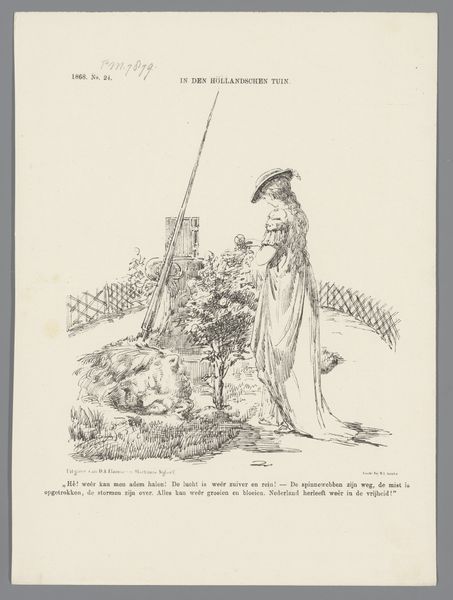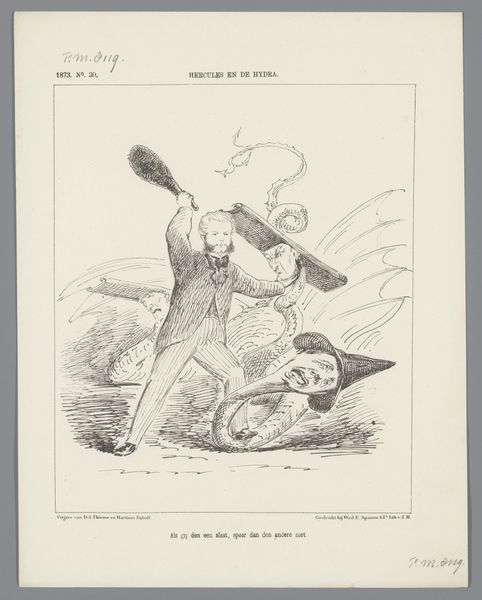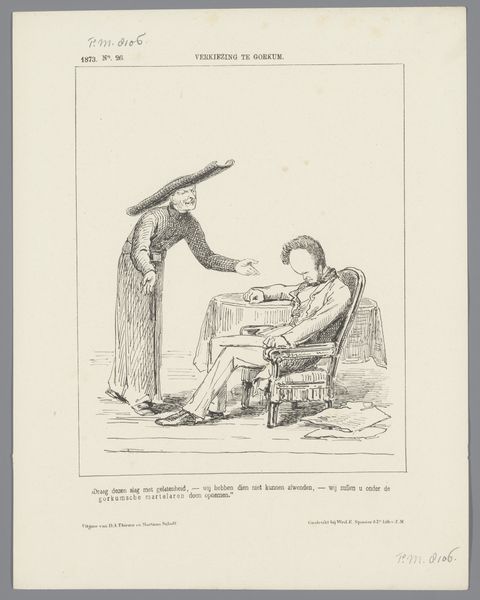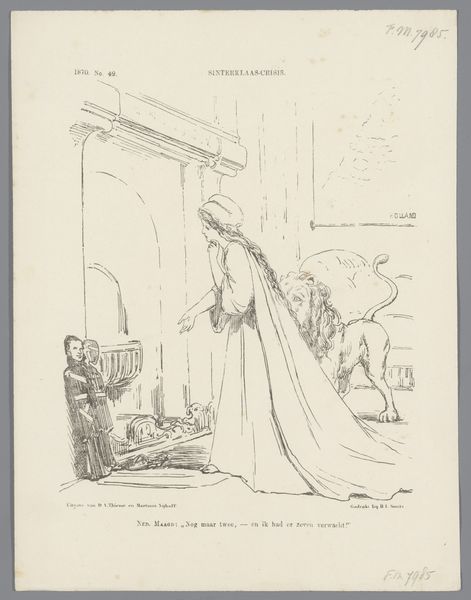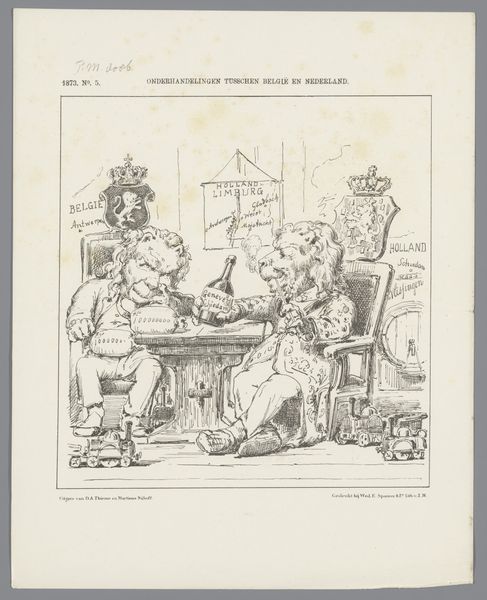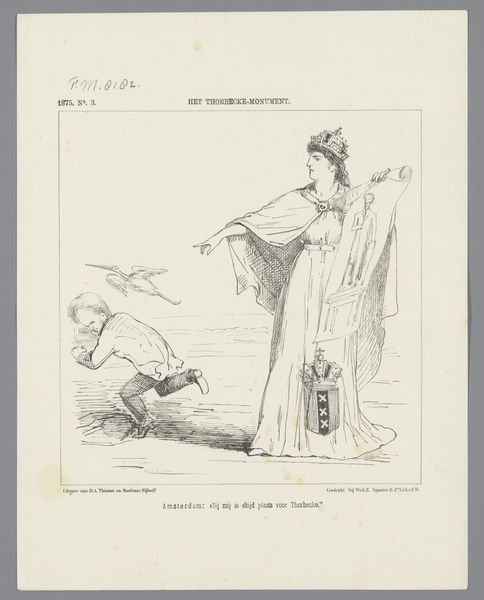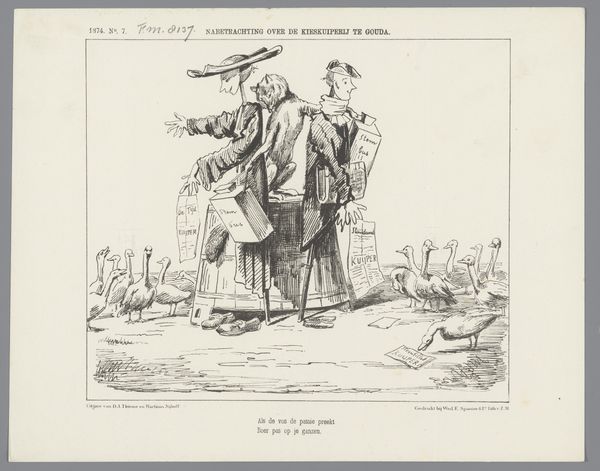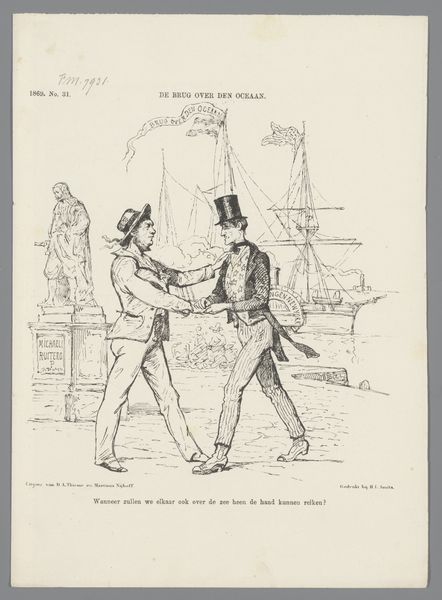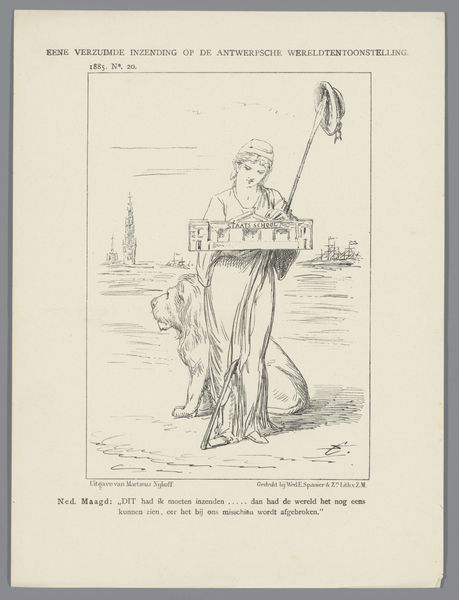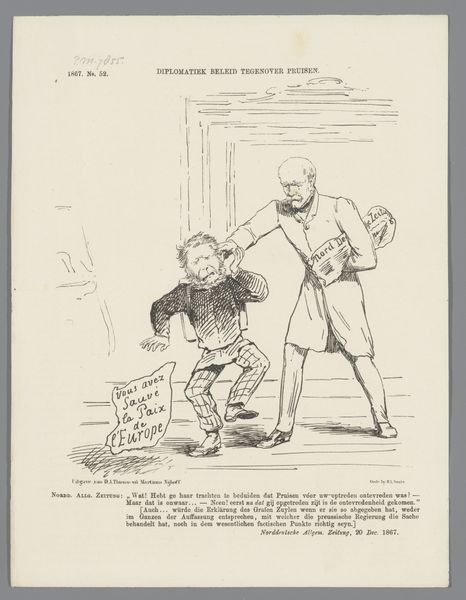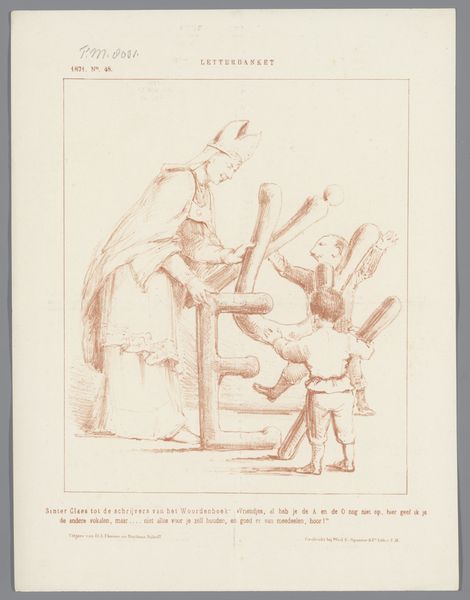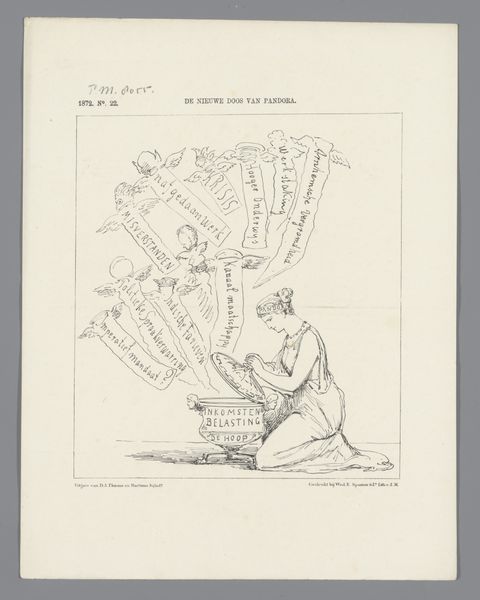
Spotprent op de verbroedering van de clericalen en de conservatieven bij de stembus, 1868 1867
0:00
0:00
drawing, print, pen, engraving
#
drawing
#
narrative-art
# print
#
caricature
#
folk-art
#
pen
#
engraving
Dimensions: height 275 mm, width 215 mm
Copyright: Rijks Museum: Open Domain
This print, created in 1868 by Johan Michaël Schmidt Crans, presents a stark commentary on Dutch politics. The most striking image is the statue looming in the background, adorned with skulls and multiple faces, a clear echo of ancient depictions of multi-headed deities associated with death and the underworld. The embrace of figures below, representing clerical and conservative factions, suggests a forced unity, overshadowed by this grim monument. The skulls evoke a sense of mortality but also triumph over adversaries. This motif isn't confined to Crans’ print; we see skulls throughout history, from memento mori in vanitas paintings to symbols of power and victory. Consider, too, the psychological weight of these images. The fear and fascination with death, deeply embedded in our collective consciousness, lend these symbols a powerful, emotional charge. The artist taps into these subconscious fears to evoke a visceral reaction. This echoes the cyclical nature of history, where symbols resurface, laden with new meanings yet retaining their primordial power.
Comments
No comments
Be the first to comment and join the conversation on the ultimate creative platform.
